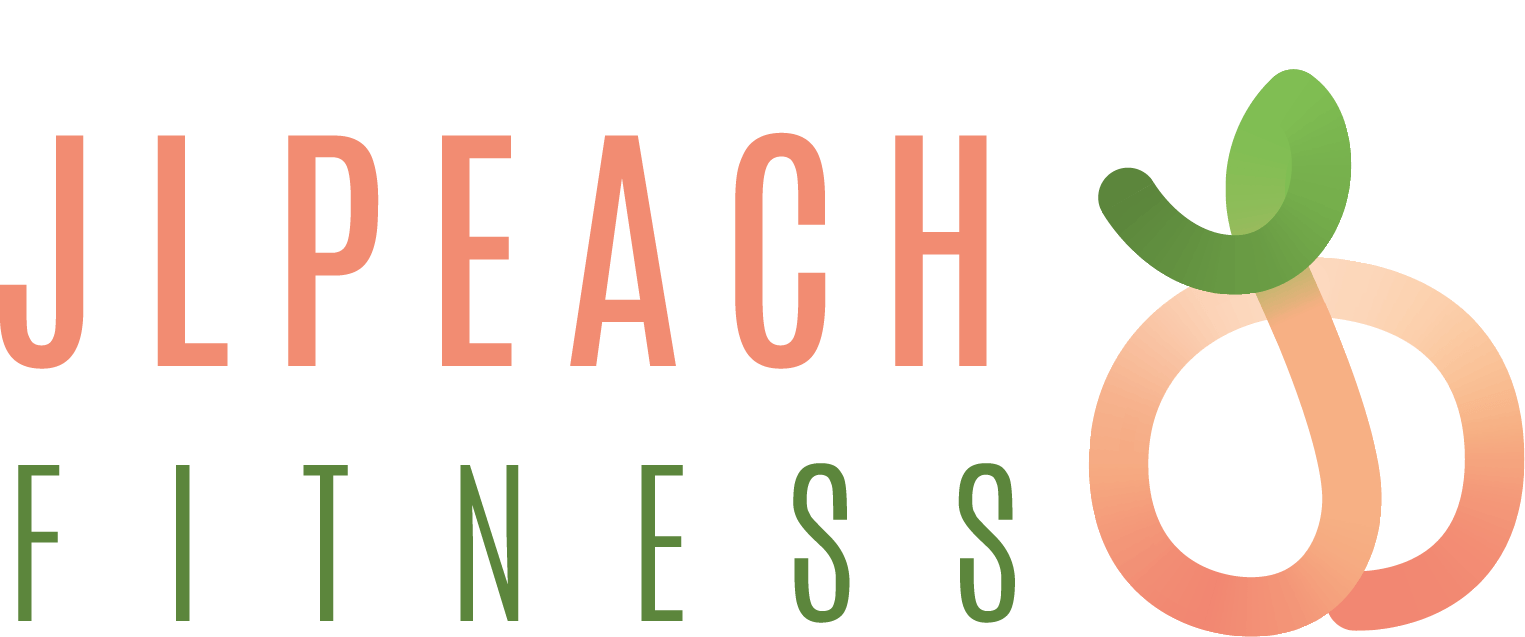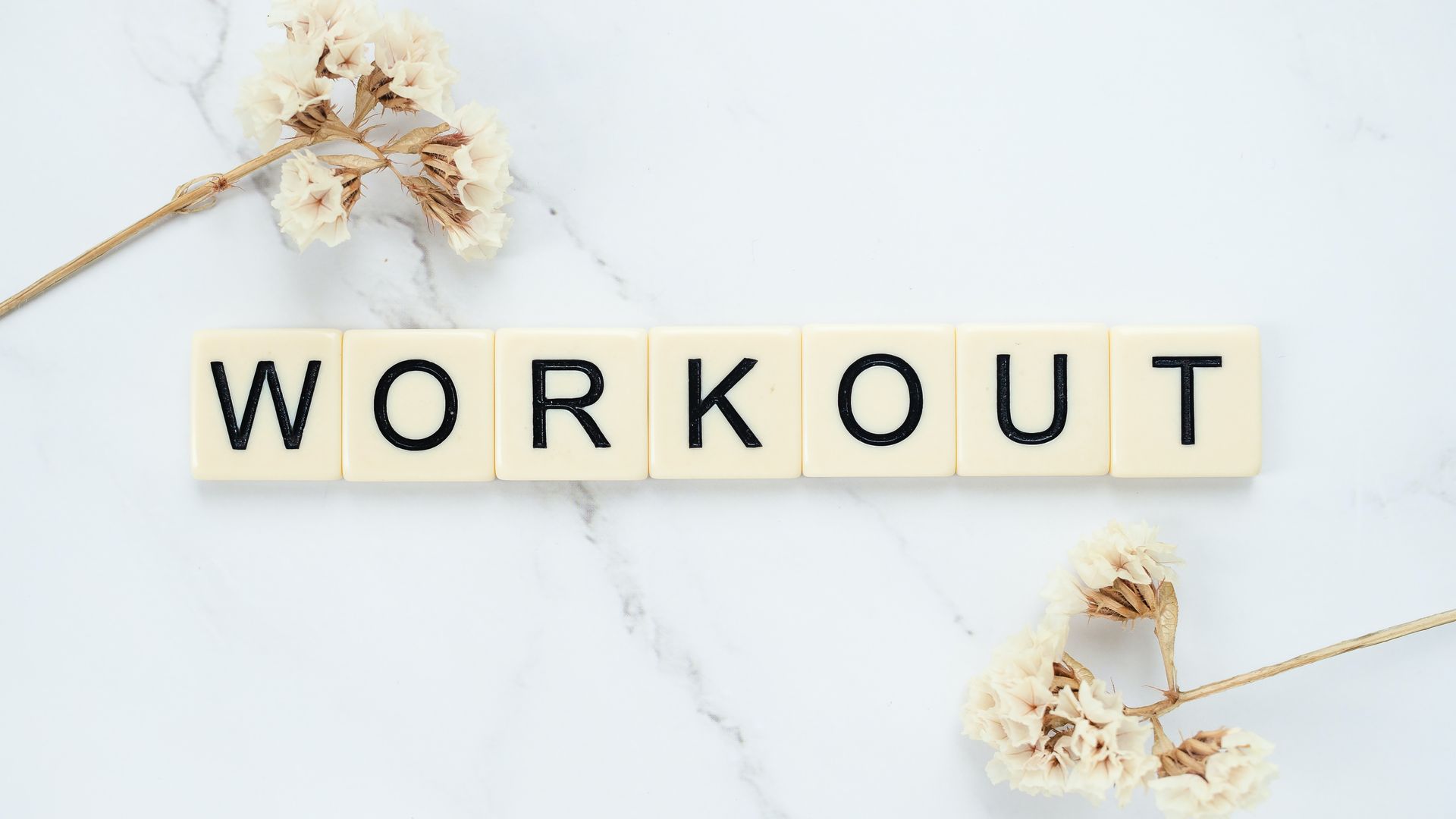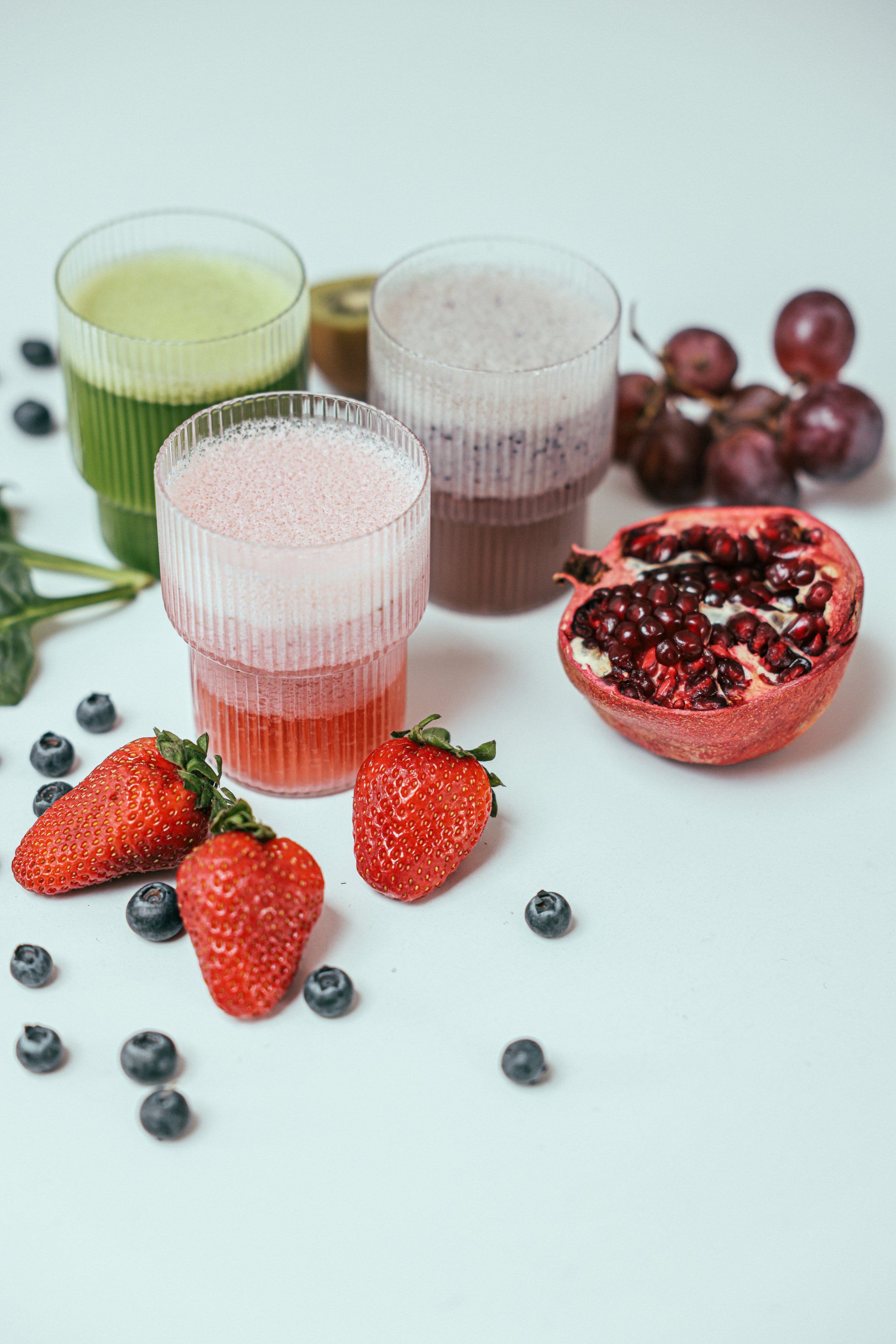THE JLPEACH BLOG

Your muscle won’t turn into fat- Fitness Myths That Are Holding You Back These fitness myths might be holding you back if you believe them. This article is going to debunk a bunch of common fitness myths that don’t help you do the right things when it comes to getting the body you want. I’ve broken the fitness myths up into 3 sections: Fitness myths about your training Fitness myths about your nutrition Fitness myths about your metabolism I hope that after reading this, you won’t fall for these fitness myths again and will have a better idea of what you need to do in order to change your body. Fitness Myths Busted- TRAINING MYTH: Heavy weights will make you bulky. TRUTH: Lifting heavy weights is the best way to get lean. Lifting heavy weights will not make you bulky, especially if you’re female. Testosterone is one of the main hormones involved in muscle growth, and women simply don’t have as much of this as men do. Muscle growth is hard. It takes months to years of following a structured training program, performing the exercises in that program correctly and progressively overloading, in order to grow a significant amount of muscle. If you start weight training and feel like your pants are tighter, then its because you’re eating too much food and gaining fat. You might be gaining some muscle, but this takes up less room than fat does, so it will actually make you tighter, not bulky. MYTH: The burn you feel in your muscles is fat burning. TRUTH: You can’t feel fat being burnt. Even if you feel like your fat is burning from a particular area, it’s not actually fat being burnt. When your muscles can’t get enough oxygen to make energy, they produce lactic acid instead. It’s the build up of lactic acid which results in that burning sensation. One of the most common mistakes I see people making is doing ab exercises to lose their belly fat. You cannot spot reduce fat. Doing certain exercises to lose fat from that area won’t work. MYTH: The more sweaty you get the more fat you’ll burn. TRUTH: You don’t need to do cardio in order to lose fat. Sweat is simply a mechanism your body uses to keep its temperature stable. It has no association with fat burning and isn’t a sign that your workout has been effective. If you’re working out to sweat, you’re probably not getting the most out of your time in the gym- especially if fat loss or muscle gain is the goal. Note: If you sweat a lot during a workout and notice that your weight goes down, it just means you’ve lost water. It’s not fat. MYTH: Sore muscles indicate you’ve had a good workout. TRUTH: You don’t need to feel sore after a workout in order for it to have been effective. Muscle soreness can indicate that you haven’t used those muscles for a long time (or at all). You’ll also be more sore after a workout that includes lots of eccentrically loaded exercises, or when you’ve increased the intensity or volume. Muscle soreness doesn’t indicate that your workout was effective. In fact, too much soreness can be a bad thing as it impacts your performance in your future workouts, which could impact your results. Some soreness is normal but you want to make sure you’re balancing your training volume with enough recovery time so that you can get the most out of your workouts. MYTH: You need to do cardio for fat loss. TRUTH: You only need a calorie deficit for fat loss. If you don’t like doing cardio, you don’t need to. Cardio will impact your recovery and performance with your weight training so be mindful of this if you do decide to do it. MYTH: Weight training converts fat to muscle. TRUTH: Your body can’t turn fat into muscle. There are a number of biochemical reactions that take place in order for fat to be broken down in the body, or for muscle to be synthesised. Fat doesn’t simply turn into muscle from weight training- this is impossible. Your body can use fat for energy but in order to make muscle it needs to be getting adequate protein from your diet. Muscle tissue is made up of amino acids which are comprised of the elements Carbon, Hydrogen, Oxygen and Nitrogen. Fat is made up of triglycerides which are comprised of Carbon, Hydrogen and Oxygen, but not Nitrogen. There’s no pathway in the body that converts triglycerides into amino acids to synthesise new muscle. That’s why its essential to get enough protein in your diet if you want to build muscle. MYTH: Your muscles turn into fat if you don’t use them. TRUTH: Your body can’t turn muscle into fat. Your muscles don’t turn into fat from lack of use. If you stop using them, they atrophy and the area may feel softer but it’s not because it has turned into fat. Fat and muscle are separate tissues and one doesn’t simply become the other. MYTH: Fasted cardio burns more fat. TRUTH: It doesn’t really matter whether you do cardio fasted or fed. It is true that your body will tend to use fatty acids as fuel over carbohydrates when doing aerobic activity in a fasted state. But this doesn’t mean that you’ll lose more fat overall. That one hour or so you may spend on the treadmill is only a small percentage of your day. If you’re still eating too much food, it doesn’t matter if you burn more fat during that one hour period or not, overall you won’t lose weight. If you enjoy fasted cardio, or if it suits your lifestyle better, do that. If you would rather eat something beforehand, it won’t make a difference to your fat loss attempts so long as you’re controlling your food intake over the course of the day. MYTH: Working out 6 days a week is better than 3 days. TRUTH: It depends on your lifestyle and experience! If you’re an advanced lifter, then 3 days a week might not be enough time to get all the training volume you need to stimulate your muscles enough to grow. If you’re a beginner or even intermediate lifter, 3 days can be enough. If you’re super busy and don’t have time to get to the gym 6 days a week, you’re better off doing 3 good workouts consistently each week, than trying to do more and becoming inconsistent (skipping workouts or doing them half-assed). When it comes to high frequency training, you want to make sure your training split is spread out in a way that allows each muscle group to recovery properly, whilst also stimulating the muscles enough throughout the week (more than once a week is better for muscle growth). MYTH: For best results, your workouts should last for an hour or more. TRUTH: It’s not about time, it’s about effort in that time. For best results, you need to train with enough effort. If you can workout for more than an hour, you probably haven’t been pushing yourself hard enough. You likely could have used a heavier weight or have done a harder exercise. Unless you’re a powerlifter and need to be taking 5+ minutes of rest between sets, 30-60 minutes is plenty of time to have an effective workout. Fitness Myths Busted- NUTRITION MYTH: Too many carbs will make you fat. TRUTH: No food on its own will make you fat. Eating too much food for your daily energy needs will make you fat. This doesn’t happen overnight. It happens from weeks and months of giving your body too much energy in the form of food. The energy has to go somewhere. If it can’t be used, it’s stored as fat. When it comes to fat loss, you need to make sure you’re eating less energy than your body needs so then it has to use the stored energy (your body fat) for fuel. Carbs are not essential for the body but they are optimal, especially if you want to be happy, build muscle/ strength and sleep well. And they won’t make you fat so you can enjoy them guilt free! MYTH: Fat will make you fat. TRUTH: Fat does not make you fat. I won’t repeat myself apart from this: no food on its own will make you fat! Fat is more likely to be stored as fat than what carbs or protein are. However, you still have to be eating too much food for this to happen. Unlike carbs, fat is essential for the body so you want to make sure you’re eating enough. MYTH: Insulin makes you fat. TRUTH: Insulin is a storage hormone, not a fat producing one. Insulin is a storage hormone. But it doesn’t make you fat. Insulin allows fat to be stored in cells, but you have to be eating more energy than you need to actually gain fat. Insulin also allows carbohydrate to be stored as glycogen in your muscle and liver, and is involved in muscle growth. There are so many myths around insulin, one being that carbs are bad because they increase insulin. It’s not just sugar and carbs that cause insulin to rise. It’s released in response to amino acids so that there’s a stimulus for protein synthesis after a meal. Your nervous system also modulates insulin secretion. MYTH: Detox diets will help flush toxins from your body. TRUTH: If a snake bites you, you wouldn’t drink a juice to get rid of the toxins from it’s venom. Your body is always removing toxins. The skin, the lungs, the kidneys and your liver, all help to remove unwanted particles on a daily basis. Say you get bitten by a snake and you really need to detoxify your body- you need to go to hospital. If you had to wait until you drank some detox juice to clean your insides, you’d likely be dead already. You don’t need juice cleanses and detox teas. They don’t help you lose fat. Yes, you might lose weight if you drink juice for a week, but weight loss and fat loss are not the same thing. You’ll likely gain the weight back as soon as you go back to eating normally. MYTH: Apple cider vinegar will help you burn stubborn fat. TRUTH: You probably don’t have to worry about stubborn fat yet. Stubborn fat is stubborn because certain fat cells in the body are easier to mobilise fatty acids out of than others. In order for fat to be used for energy by the body, it must first be mobilised out of the cell it’s stored in. If you are eating in a calorie deficit, the body will take the fat from the cells where fat is easily available first. It will take it from the “stubborn” cells last. To lose stubborn fat, you have to first lose fat from all over your body. Stubborn fat is only really an issue if you’re already lean. Otherwise, a calorie deficit is all you need. MYTH: Sugar is bad for you. TRUTH: Anything can be bad for you in the wrong quantity. Eating a diet that is 80% whole foods and 20% whatever else, is what I recommend to my online coaching clients. Many of them come to me scared to eat sugar and certain foods. However, this just creates a poor relationship with food. When you see food as good or bad, you’re more likely to binge or overeat the bad foods when you can’t control your emotions. Or, you’ll feel guilty after eating something rather than just enjoying the moment. Stop seeing food as good or bad, healthy or unhealthy. It’s not helping you. Unless you’re diabetic, and given you eat nutritious food most of the time, a little bit of sugar won’t hurt you. MYTH: Eating more protein will give you bigger muscles. TRUTH: You have to do a lot more that eat enough protein to build muscle. Yes protein is necessary to ensure you have the amino acids required to build muscle tissue, but unless you’re also providing a stimulus to the muscle to grow, it won’t. To grow muscle, you should be following a structured training program and focusing on progressive overload. Even then, muscle growth is slow. Eating extra protein won’t speed this up and it definitely won’t cause your muscles to get big. MYTH: Brown rice is better for you than white rice. TRUTH: It depends! There is an argument for and against both brown rice and white rice. For example, brown rice contains anti-nutrients which can prevent the absorption of other nutrients by the body. It’s also more difficult to digest. If you have a leaky gut or some kind of digestive issue, then white rice could be better for you. Overall, eat what you like the taste of better and what makes you feel good after eating it. Both have similar calories. As long as you can fit it into your calorie needs, it doesn’t matter which one you choose. This applies for most foods. There is a good and bad side to anything, and what is “better” for you will depend on a number of factors. MYTH: Eating clean is the key for weight loss. TRUTH: Clean eating could be detrimental for weight loss. If your diet is so restrictive that you only allow yourself to eat “clean” foods, you create a need to binge or overeat “treat” foods when you’ve had a bad day or when you can’t handle your cravings. For weight loss, you need to be eating in a calorie deficit. It doesn’t matter how clean you eat, if you’re eating too much food you won’t lose weight. MYTH: Supplements are the key for fat loss. TRUTH: Supplements may assist in fat loss but are not necessary. You can take all the supplements you want- if you’re eating too much food, you won’t lose fat. Supplements like protein powder can help you get more protein in your diet and assist with fat loss that way. But you don’t need supplements for fat loss and most of them are a waste of money. Fitness Myths Busted- METABOLISM MYTH: Your metabolism speeds up when you have more muscle. TRUTH: Muscle only burns a tiny bit more energy than fat. Your metabolism increases when your weight increases- whether that’s from fat or muscle. It simply costs more energy to run a bigger body that a smaller one. If you gain fat, your metabolism will increase, and if you gain muscle it will increase. The benefit of gaining muscle and not fat should be obvious. Muscle is denser than fat, so it takes up less space for the same amount of weight. Yes a pound of fat and a pound of muscle weigh the same. A person with more muscle on them may look leaner, even if they weigh the same as someone who has less muscle (but more fat). Bottom line, building muscle will help you look better and will help you increase your energy requirements. But it isn’t because muscle burns a lot more energy than fat. A muscle cell only burns a tiny bit more energy than a fat cell. It’s not a significant enough difference to increase your energy needs by that much if you just replace muscle with fat without gaining weight. MYTH: Lemon water will help kickstart your metabolism. TRUTH: Lemon water will help you damage the enamel on your teeth. It won’t do anything to help your metabolism because your metabolism is always running. It doesn’t need kickstarting in the morning. No food or drink will “boost” it enough to cause a significant increase in fat burning leading to faster fat loss. MYTH: Eating 6 meals a day will help to speed up your metabolism. TRUTH: Eating more frequently could be making you fat. It costs energy to digest and absorb the food you eat, but it’s such a small component of your total daily energy expenditure that eating more frequently won’t make much of a difference to your overall energy needs, or your rate of fat loss. If you like eating 6 meals a day you can do that and lose fat, as long as you are eating in a calorie deficit. Sometimes, eating many small meals that don’t fill you up properly is worse for fat loss because you end up in a state where you always want more food or are constantly thinking about when you can have another snack. I’ve dealt with countless clients who get stressed from having to think about what to eat all the time and don’t have time for eating so frequently. If this is you, eating 2-3 larger meals that fill you up, can help you avoid the need to snack or think about food. This can help you stick within your calorie requirements more easily too. MYTH: Not eating enough will damage your metabolism. TRUTH: You can’t damage your metabolism. Not eating enough will cause your metabolism to adapt to the smaller amount of food you’re eating. This isn’t permanent and you can build your metabolism back up to where your true total daily energy expenditure should be based on your body weight and activity level. MYTH: You need to eat breakfast to boost your metabolism. TRUTH: Breakfast is not the most important meal of the day. You don’t need to eat anything in the morning if you don’t want to. Breakfast won’t speed up or kickstart your metabolism. Fasting in the morning won’t damage your metabolism or make it slower. Your metabolism is always working regardless of when you eat. If you believe breakfast is the most important meal of the day, you need to question where this belief comes from. Often it’s because you like eating breakfast and don’t want to give it up- that’s fine. If you love breakfast, keep eating it. But if you don’t, then you don’t need it to lose fat. MYTH: It’s harder to lose fat as you age because your metabolism slows down. TRUTH: Your age is just an excuse for not being able to lose fat. Your metabolism naturally slows down a tiny bit as you age but not enough to make a significant difference to your body weight, as long as you stay active and maintain your muscle mass. What usually happens with age, is you move less and stop using your muscles as much causing them to atrophy. This is how your metabolism “slows down” significantly. It’s not from your age. No matter how old you are, you can lose fat. Your age isn’t to blame for your weight gain. WHAT’S NEXT? If something seems too good to be true, it usually is. Transforming your body takes effort. If something as simple as lemon water could boost your metabolism enough to help you lose fat, wouldn’t everyone do that? Do your own research on everything! Fitness myths and diet trends will continue to keep popping up, but you don’t have to keep trying them. And if you need expert support - you've come to the right place. Click here to get my one to one support.
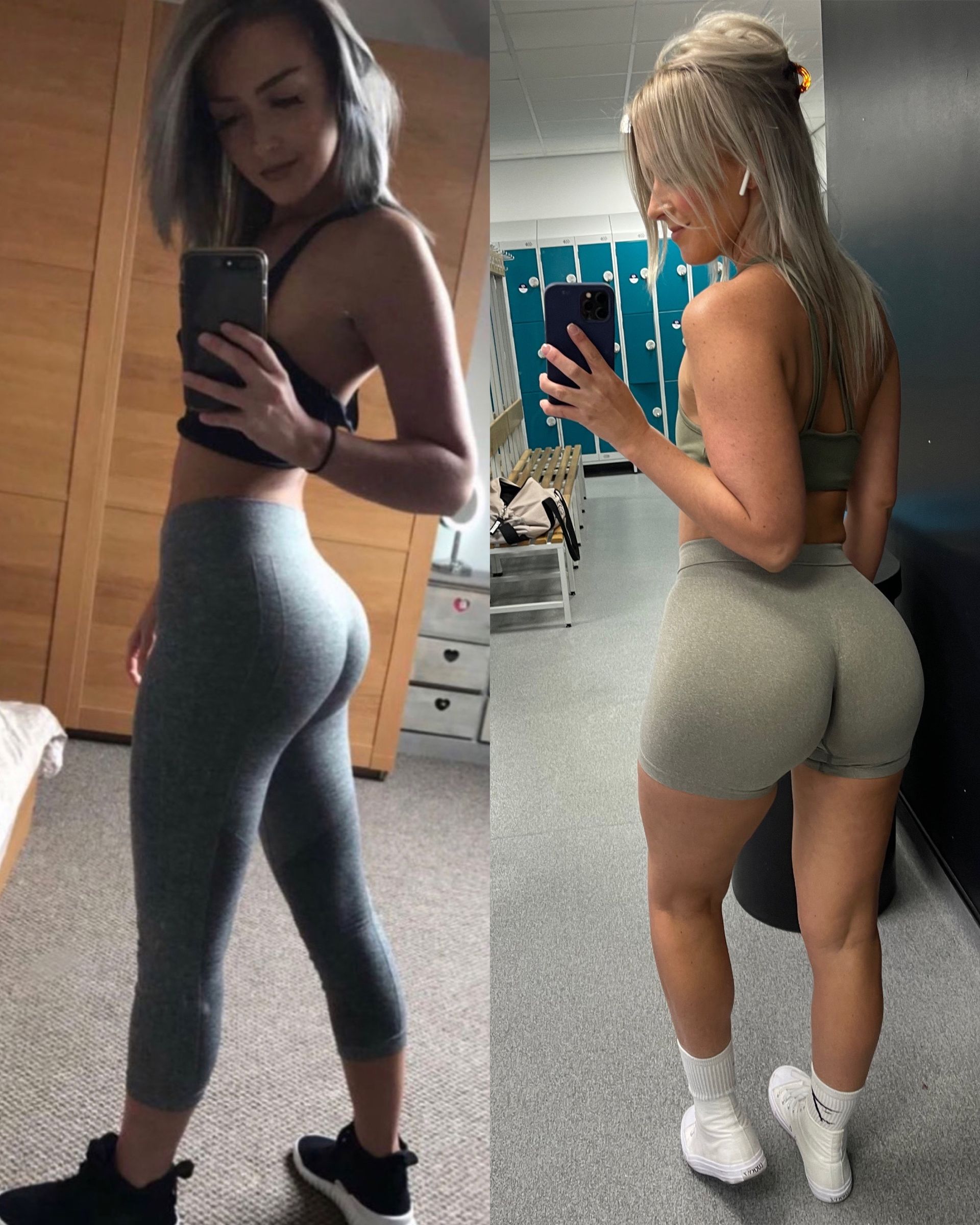
Embarking on a muscle-building journey requires a strategic approach akin to constructing a pyramid. Let's break down the key principles outlined in the "Pyramid of Muscle Building" from Bodybuilding.com , highlighting the importance of each step in your quest for gains. 1. Foundation: Nutrition Nutrition serves as the bedrock of muscle building, providing the essential nutrients your body needs to support growth and repair. Here's why it's crucial: Caloric Surplus: To build muscle, you must consume more calories than your body burns. This surplus provides the energy needed for muscle growth. Macronutrient Balance: Protein, carbohydrates, and fats are the building blocks of muscle. Ensure your diet includes adequate amounts of each to support muscle growth, energy levels, and overall health. Timing: Properly timing your meals, especially around workouts, can enhance muscle protein synthesis and glycogen replenishment, facilitating recovery and growth. Hydration: Staying hydrated is essential for optimal muscle function and recovery. Aim to drink plenty of water throughout the day, particularly during and after workouts. 2. Structure: Resistance Training Resistance training forms the structural framework of muscle building, stimulating muscle growth through targeted exercise. Here's how to optimize your training regimen: Progressive Overload: Continuously challenge your muscles by gradually increasing the intensity, volume, or weight of your workouts. This progressive overload is essential for ongoing muscle adaptation and growth. Compound Movements: Focus on compound exercises that engage multiple muscle groups simultaneously, such as squats, deadlifts, and bench presses. These movements recruit more muscle fibers and stimulate greater growth. Volume and Frequency: Find the right balance between training volume (sets and reps) and frequency (how often you train each muscle group) to promote muscle growth while allowing for adequate recovery. Proper Form: Maintain proper technique and form during exercises to minimize the risk of injury and maximize muscle activation. Quality reps are more effective than sheer quantity. 3. Finishing Touches: Recovery Recovery is the final piece of the puzzle, allowing your muscles to repair and grow stronger. Incorporate these strategies to optimize your recovery: Rest and Sleep: Adequate rest and quality sleep are essential for muscle repair and growth. Aim for 7-9 hours of sleep per night to support recovery and overall health. Nutrient Timing: Consume a post-workout meal rich in protein and carbohydrates to replenish glycogen stores and provide the building blocks for muscle repair. Active Recovery: Engage in low-intensity activities such as walking or yoga on rest days to promote blood flow and reduce muscle soreness. Stress Management: High stress levels can hinder recovery and muscle growth. Incorporate stress-reducing activities such as meditation, deep breathing, or hobbies you enjoy. Conclusion Understanding and implementing the principles of the "Pyramid of Muscle Building" can set you on the path to achieving your muscle-building goals. By focusing on proper nutrition, structured resistance training, and effective recovery strategies, you can build a strong foundation, maximize muscle growth, and unlock your full potential. Consistency, dedication, and patience are key as you ascend the pyramid of muscle building and transform your physique.
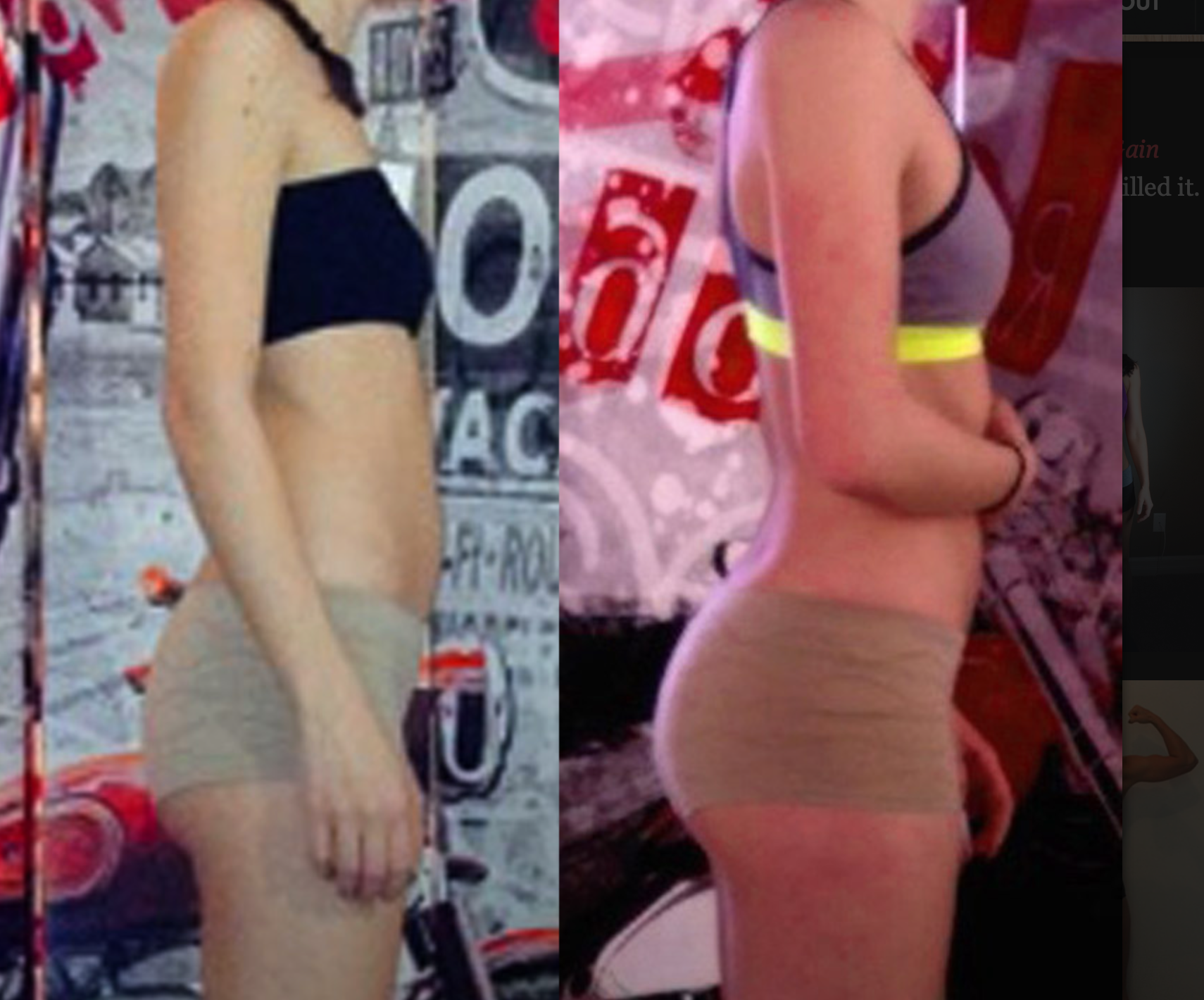
Maintenance calories for fat loss is an option. Yes you read that right. You may think there’s only two options when it comes to setting up your nutrition: Go into a calorie deficit and lose fat Go into a calorie surplus and gain muscle In this article I’m going to show you that there’s a third option: maintenance for fat loss (and muscle gain). It works and in my opinion, it’s a great option at the START of your fitness journey. The Magic Of Maintenance Calories For Fat Loss You might get confused when I tell you to “just eat at maintenance.” You’ll tell me “but I need a calorie deficit because I want to lose my belly fat.” That is incorrect. You might think you can only maintain your current body on maintenance calories. The truth is, there’s so much progress to be made at maintenance especially if you fall into the following categories: Beginner to weight training Beginner to following a structured program Not yet reached your strength potential Skinny fat If you’re overweight and find the whole dieting thing overwhelming there’s also no harm in starting at maintenance and simply adding 3-4 weight training sessions to your week. You’ll still recomp, meaning you’ll lose some body fat whilst you build muscle. Once you find the working out part easy, you can focus on your nutrition and go into a deficit to lose weight. You don’t have to nail everything at once, especially if you find it overwhelming. Start small and integrate the right habits one by one. You’ll find it much easier and be able to stick to the process for longer leading to better results. How Can Fat Loss Happen At Maintenance? This is effectively body recomposition and I’ve written about it before here . Your body is dynamic. Even if you eat the same thing every single day you don’t always use the same amount of energy. Some days you might end up in a small deficit, some days you might be in a small surplus. At any given moment in time you might be in an energy deficit or an energy surplus. Yes you do need to be in a calorie deficit for fat loss to happen physiologically. This doesn’t mean you need to be aiming to eat in a calorie deficit each day. You can aim to eat at your maintenance calories and still end up in a deficit on some days to lose fat. Make sure you’re taking your measurements and progress pictures. This is where fat loss will show up. The scale will likely stay the same. In some cases it might even go up (even though you’re losing body fat). You might’ve heard that body recomposition isn’t good because it takes too long. It does take a long time. So does going through a proper bulk and cut cycle to change your body. No matter what, real transformation takes time. If you think your journey is going to be a 12 week to 6 month thing, you’re wrong. Depending on where you want to get to, it’s likely going to be a lot longer. Think years, not months. If you can spend a decent amount of time at the easiest place with food- maintenance- why wouldn’t you start there? The more patient you are, the better your results will be. Change takes more time than anyone would like but that’s not a bad thing. You have time! This is a whole other topic worthy of it’s own article but you don’t need to wait until you’re at your dream body to be happy. You can be happy and enjoy your life through the process. You can’t rush sustainable fat loss. Don’t do what everyone else does and get impatient. A calorie deficit may seem like it’s the fastest way. In some cases yes it makes sense. In so many cases it’s actually slowing you down. The Benefits Of Starting At Maintenance Calories For Fat Loss If you need more convincing, here’s a summary of why you should start at maintenance: You don’t have to worry about dealing with hunger More flexibility with your food choices You’ll build some decent muscle Don’t have to worry about gaining body fat You might end up using more energy and losing weight (yes this happens) It’s the easiest place to adjust from Your training will be more enjoyable The process will feel easier Your body will respond better to a deficit in the future especially if you’ve spent your entire life trying to eat as little food as possible If you think your waist is not going down whilst eating at maintenance it could come down to a few reasons: You’re not training properly, even though you think you are. This is very common! You’re not actually eating at maintenance (you’ve estimated your calories wrong or you’re tracking wrong, or maybe you’re scared to eat that much because it feels like too much food) You’re actually underweight and need to focus on building muscle Let me show you what can happen if you train properly and start at maintenance.

If you've landed here you're either wanting to have a look around, get educated and inspired. Today I want to inspire you with one of my clients and her fitness journey. Joanne is a single mum of a 2 under 5, works as a night shift nurse in a busy hospital. She has been with me for around 2 years now. First she just wanting to feel abit better about herself until she fell in love and starting seeing more progress than she did before she had kids! Here is her story: "Before I had my 2 kids I always had a good relationship with my body. I was a cheer leader, volunteered every weekend. Met my husband in college and got pregnant whilst doing full time college training to be a nurse. My education, goals, ambitions had to go on hold due to some complications during birth but we was blessed with a beautiful baby boy. After I recovered I got straight back into college plus working the nightshift, plus volunteer work. This was the first time I ever felt lethargic... Turned out I was pregnant again just as I was about to get into the swing of things. I has another healthy beautiful boy. Thankfully I was able to get my degree in nursing before having him! Just in time! After having baby no.2 nothing was the same, I felt saggy, lost my confidence. I quite frankly hated myself. I had to grieve my old body whilst trying to learn to love my new one. Nothing was working. I was working out plus everything that came with a working mum everyday. My relationship with food and myself was terrible. I was snappy at the kids and my husband. I paid £3450 in personal training and was advised to live on 900 calories per day. I was so depressed and anxious all the time. A girl I follow on Youtube said that she follows Jamie's app so I had to take a look when she said it was affordable. 2 years later I've never looked back or better! My overall goal was just to build a good relationship back up with myself and now I feel confident and better than before I had my kids. My husband benefits from it too! Jamie has taught me everything I needed on my post partum journey and beyond and I can't thank her enough. After 6 months of post partum training I moved gradually back onto strength training and I fell in love with someone I used to think would make me bulky. I feel so sexy! If you've been sitting on the fence about joining use this as your cue to sign up now. " It's members like this that make everything worth it. Seeing Joanne's progress has been absolute pleasure and I'm thankful for her commitment and her willingness to trust me and learn the process. I'll let her progress speak for itself.

Before you bring out the torches and pitchforks, hear me out. I know running may not be the forte of the majority of Muscle and Strength’s audience, but running, when applied correctly, maybe exactly what you need in your fitness arsenal. Running promotes a healthy quality of life, increased GPP (General Physical Preparedness), along with unmatched improvements in the metabolic response, to name a few of its many benefits. Not only will this article help explain how and why running should be incorporated into the workout regimen of novice lifters to the most seasoned of gym vets, it will also give you every piece of information you need to start down the running trail. Benefits of Running As most of you readers already know, weight training is vital for the health of the human body. It aligns posture, increases metabolism, increases flexibility and fixes muscular imbalances (when done correctly). However, to increase the effects of weight training, some sort of cardiovascular activity is crucial. By adding cardiovascular activity, you can burn fat, increase natural hormonal release and lower your risk of heart disease. But how does this help you achieve your weight training goals? By participating in cardiovascular exercise you are prolonging your body’s ability to train and therefore increasing growth potential. By increasing training ability, all that you’re essentially doing is allowing your body to train for longer periods of time. For example, instead of working out for 60 minutes, you are now giving your body the ability to train for 90 minutes, thus more potential for gains in size and strength . In this section, so far, I’ve only referred to cardiovascular activity, and not particularly running, well this is why; simply all cardiovascular activity is done for the same reason and has the same potential. Cardiovascular activity is what the name implies, training of the heart and circulatory system. Sports that fall into this category are swimming, cycling, boxing, as well as running. Swimming is great, but for the majority of people, they can’t find competitions to meet their competitive edge. Boxing is a personal favorite but causes muscular imbalances through force production and time under tension in the pushing phase with minimal tension in the retraction phase. Boxing, like swimming, may be hard to compete in with minimal competitions combined with the high skill levels of those competing. These also require a pool or ring, respectively, which can be hard to come across, and memberships to these clubs/facilities can be costly. Cycling creates muscular imbalances through the repetitive circular motion in the plane of movement that the pedals rotate in. Cycling can be as costly, if not more so than swimming and boxing. This leaves only running. Running is a great cardiovascular activity that can be done anywhere. Because it comes naturally to the physiological design of the human body, the learning curve is minimal and muscular imbalances (especially when paired with proper weight training) are unusual. Competitive Running Although most gym rats, myself included, enjoy seeing our bench press rise by a few pounds or striving to add a few inches to the arms, powerlifting and bodybuilding may not be for us (I have a feeling I’ve made quite a few enemies at this point in the article). For the majority of average lifters, powerlifting and bodybuilding may be too taxing on the body, as well on the wallet. However, running may just be what you need to fuel you’re competitive edge. Another benefit of competitive running is its regularity, whereas powerlifting meets may be months apart and hours away from your home. In your town alone, you shouldn’t be surprised to find several races a year. This will not only give you a date to work for to achieve a goal, but will give you an annual way to mark your progress. Types of Races 5K - (Approx. 3.1 Miles) This is the most common of races you will come across. Commonly done by charities and nonprofit groups as fundraisers, these are a great race to experience with friends. These races can be competitive because with an average crowd of 100+ it is easy to find someone to match your skill level. 1 Mile Run - This is a good sprint event. Although not as common as 5k races, it’s a good way to develop speed and a good way to track running progression. 10k - (Approx. 6.2 Miles) This event is better for more seasoned runners as it is more demanding. 10k races can usually be found sponsored by running clubs in your area. Because of its skill level, they are good place to go to find information about races for more skilled and challenging runs. Challenge/Trail Runs - My personal favorite because of their difficult nature. These events can vary in distance and difficulty. In some challenge runs you may find yourself jumping over fires, trudging through muddy water and climbing obstacles. Another positive to these is in certain cases is free beer (for those 21+) after runs. A downfall is they are rather costly ($50-$200). Trail runs may give you an opportunity to enjoy the sights and sounds of nature that you’ve never noticed before. These are also a great motivational tool to run more because its beauty makes it so enjoyable. Marathons - I consider myself a moderately experienced runner, but I still steer clear of these. 26 miles of straight running isn’t exactly what I consider fun or within the limits of my physical capabilities. However, if you decide to ignore my advice, make sure you have 2+ years of running experience and log an average of at least 25 miles a week. You can find more information on these at local running clubs or online on your favorite search engine. Ultra-Marathons - (50-200 Miles) Like I said before, a 26 mile race is extremely challenging, which puts these races past the borders of rationality. If you decide that this is what you want to do, make sure you have 3+ years of running experience and have successfully completed multiple marathons. Some of these have qualification standards to make sure all athletes are physically suited for such a challenging race. Other Races - I’ve just skimmed the surface here with the most common races. If you find other races, be sure you are healthy enough and prepared for whatever it may be. Benefits of Racing Besides the health benefits of running in itself, these races have unseen benefits. At first, spending $30 on a 5K may seem like a loss of money, but in reality, you get much more than that in return. Many races give out t-shirts with early entrees. This t-shirts can actually be of decent quality and may be a moisture-wicking material. The race fee also includes a race tag (the number pinned to the shirts of runners), which I personally like because I enjoy writing my time on them and hanging them in my home gym to see time improvements. Post-race refreshments, depending on the event, may also be covered in the fee. Sometimes, these events can be catered, and after a long and tough run, the food tastes amazing. Also covered in the fees can be a running-style goodie bag. I’ve done many races where the sponsors have gotten together coupons, trial-gym memberships, as well as many other freebies. Free stuff aside, these races give you a chance to bond with people that enjoy the same sport as you. I’ve made many lasting friendships through races and have learned of many people’s stories and struggles. The people you can meet at these races are inspiring and give you a reason to continue running. Races can create unmatched fellowship through common interests and competition. Since most races happen on the weekends, usually Saturday mornings, can you really come up with an excuse not to compete? Adding Running to Your Workout If you’re like me, you’re going to want to continue weight training while you run. A program that work swell with running is my training program “ Density Giant Set Training ” which can be found on this websites workout section under fat loss/tone. These are the three different types of runs I associate into my training program every week: Speed Run - What I classify as a speed run is generally anything under 5 miles, it varies week to week, some days it can be a route I’ve mapped online, a timed mile at a local track, or a race route. Also, during the summer when I’m frequently doing races, I will replace the race with my speed day workout. When I replace speed day with a race day, I always follow up the next day with a recovery run. Challenge Run - This is the most variable, because I’m from a fairly rural area this is easy and can be changed regularly. My challenge run consists of a trail run varying in length and location. This varies the terrain you run on and slows the adaptation response in the body to allow for elongated gains without a plateau. Speed varies drastically because of terrain variances. Distance Run - The distance run is usually done on a road/paved and flat environment. Distance day grows by 2 miles every week to allow myself to develop the stamina necessary for running a marathon in the spring. If it is the off season, my long run is usually approximately 7 miles and is done typically for maintenance. The speed is moderate, but fatigue adds up towards the end of the run. Recovery Run - I’ve always done these on and off the days after my distance runs and races. When you have the time, they are a smart idea and allow the body to recuperate faster. Recovery runs are usually done at a moderate to slow pace for approximately 3 miles. Here is how I incorporate running into a client' workouts, along with some tips for the best results: Monday - Day 1: Speed Run Tuesday Wednesday - Day 2: Challenge Run Thursday Friday - Day 3: Distance Run Saturday - Recovery Run Sunday Running is typically done after workout. Recovery run allows for recovery of lower body exercise as well as running. This running plan is shown in conjunction with Density Giant Set Training , but can be done with any workout, or by itself. Add/remove exercise to fit your body type and ability level. Weight training and running can be split up throughout the day if on time constraints Wrapping it Up I hope you’ve made it through this article and looked past my blasphemous beliefs on power lifting and bodybuilding and maybe even got something out of this. Running does nothing but help you. It allows you to train longer and gives you a place to channel your competitive nature without breaking the bank. Running can be a lifestyle in itself, but it can also be applied to the gym rat mentality to give you the best of both worlds. So, the best of luck to you in your quest to conquer the gym and happy (running) trails.

Some weeks, you might not be feeling your workouts. It happens to all of us. Whether you’ve got a lot going on at work or sleeping terribly, you will be lagging some days. Here’s the key: It’s not about pushing the limits; it’s about learning how to have a great workout every time, no matter what is happening in your life or if you’re not “feeling it.” At JLPeach, we measure success by using a simple hierarchy: Are you consistently exercising? (Consistent can be 2-3 days a week or 4-5; both are good, but the key is whether you hit your goal week-after-week) Are you training with intensity? (intensity is relative to your ability) That’s it. Sure, given those two details, we’ll make adjustments so that clients can see results, but we don’t worry about things like how long a workout lasts or feel married to specific exercises. Instead, it’s about finding what works for the client, creating a plan they can follow, and making sure they work hard, whether it’s for 15 minutes or an hour. But, it also means our clients need to know and understand how to train with intensity.
